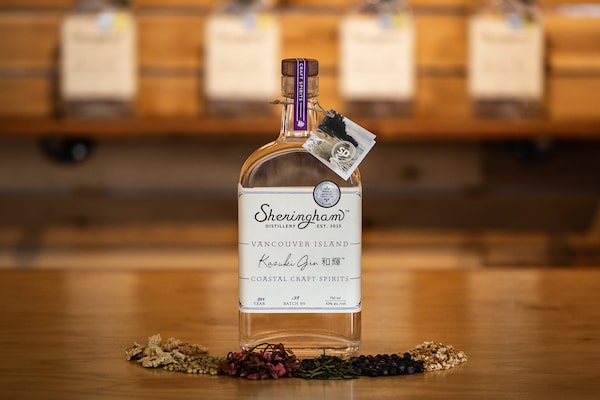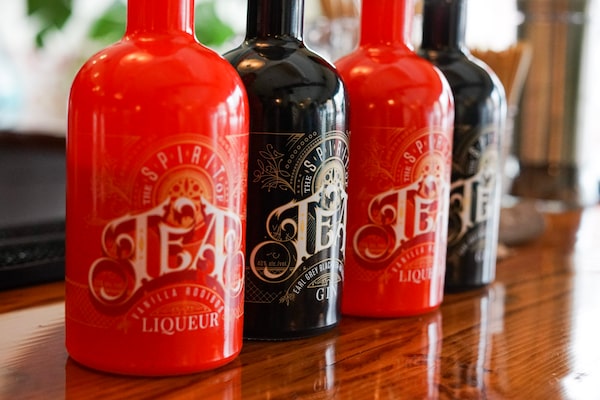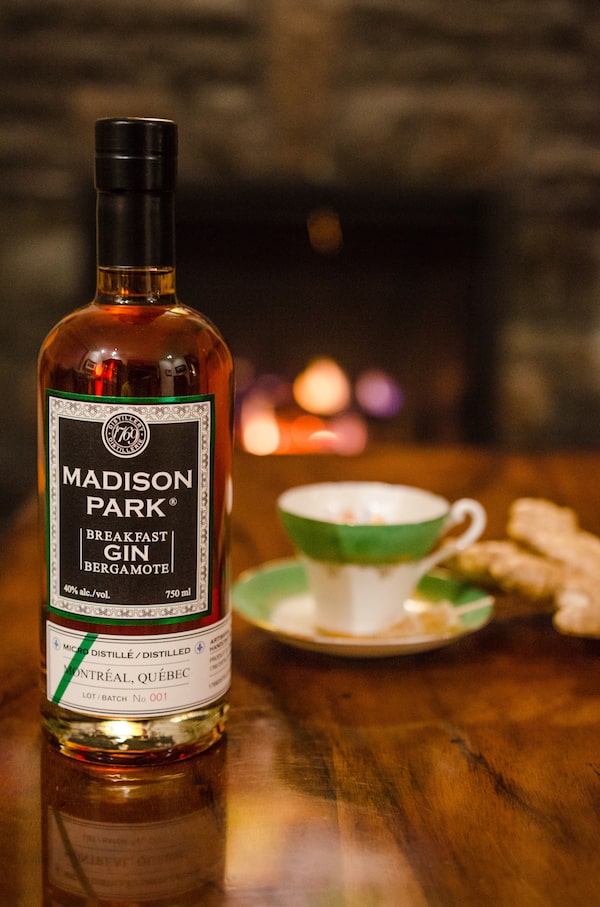
Sheringham's Kazuki is a Japanese-inspired gin made with locally sourced green tea and green-tea flowers.Handout
In Canada, tea has a history of being understated and, arguably, a little frumpy, especially compared with coffee. The latter comes with an exciting barista scene or, say, tiki drinks, which are served up with undeniable flair and topped with flaming garnishes.
But as we watch tea seep into coffee houses, with must-have ice cream flavours, craft cocktails, as a botanical in gin and now even actual tea spirits, it’s time to admit that tea sommeliers have quietly exerted a tremendous amount of influence over the past decade.
One such individual is Del Tamborini, a tea sommelier and educator who teaches a course in tea at Vancouver Community College. Tamborini founded the annual Vancouver Tea Festival in 2014 and has launched a tea-spirit company called, appropriately enough, The Spirit of Tea. So far, he has two products – earl grey black tea-infused gin and vanilla rooibos liqueur – and he’s working on new, more esoteric flavours. It’s been a slow build, though. Five years passed between the initial idea to blend his two favourite liquids – tea and spirits – and the actual product launch in 2017.
“Tea is pretty much my life,” Tamborini says. “I’ve been in the tea world for about a decade now and was one of the first certified tea sommeliers in Western Canada. But I never thought of tea spirits until, just out of the blue, a friend suggested I try combining the two things I loved so much.”
The obstacles were many. Obviously, Tamborini had a few other things on his plate, but, initially, he also had some trouble finding a distiller who wanted to work with him on the novel project; The Spirit of Tea was one of the first of its kind in Canada, if not the first. Finally, Anderson Distilleries in Burnaby, B.C., decided to take a “flyer on him” and they got working on the formula, which, it turns out, was also a challenge.

The Spirit of Tea produces an earl grey black tea-infused gin and a vanilla rooibos liqueur.Handout
“Thanks to the astringency, tea is one of the most difficult things to work with, whether you’re developing a tea cocktail or spirit or basically anything where you have tea as an ingredient,” Tamborini says. “I finally settled on what I think is an optimal time of infusion in terms of getting the maximum amount of flavour out of the tea with the minimal amount of astringency.”
A number of other distillers of late have developed strategies for their own tea spirits, which are starting to become more common. Taynton Bay, a distillery in Invermere B.C., sources proprietary blends from The Naked Leaf in Calgary for its line of low-alcohol tea spirits, which includes ginger matcha, rooibos, strawberry herbal and turmeric.
Some of the Taynton Bay products could pass for aperitivos, but other tea spirits have gone in different directions. Earl grey tea is used by B.C.’s Fernie Distillers to make a liqueur called Fernie’s Fog, whereas Black Diamond in St. Albert, Alta., turned the same tea into an earl grey vodka, albeit a slightly sweet one.

Montreal's 1769 Distillery uses five teas to make its Madison Park Breakfast Gin.Handout
Most commonly, though, tea is finding its way into gin, either as a defining feature, such as the five types of tea used to make Madison Park Breakfast Gin at Montreal’s 1769 Distillery, or as one of the signature botanicals in a blend. And the writing’s already on the wall as to what the next big trend will be. Esoteric and “acquired taste” teas, such as matcha and pu’er fermented tea, are gaining traction, the latter of which is a key botanical in citrus gin from RAW Distillery in Canmore, Alta.
Now that these teas have started to make their way into the mainstream, tea drinkers with a taste for esoterica are keen to try them in cocktails. Sheringham, an acclaimed and innovative distillery on Vancouver Island, for example, released a tiny batch of a special-release experimental spirit, Kazuki − a Japanese-inspired gin made with locally sourced green tea and green-tea flowers − as part of a holiday gift pack that took on a life of its own.
“The plan was to release it in the spring, when the cherry blossoms were all over Victoria,” Sheringham distiller Jason MacIsaac says. “But people got a taste for it. And bartenders, in particular, were really asking about when they could have it, so we decided to push it and released it in February instead.”
The seemingly sudden success of tea spirits owes a lot to years of hard work put in by tea somms such as Tamborini. The work, though, was made easier by the nature of tea itself, which provides a practically infinite new palette of novel flavours for creative taste-makers to paint with. It may have taken a little while for bakers, bartenders and distillers to catch on, but it’s definitely tea’s time now.
Visit tgam.ca/newsletters to sign up for the weekly Style newsletter, your guide to fashion, design, entertaining, shopping and living well. And follow us on Instagram @globestyle.